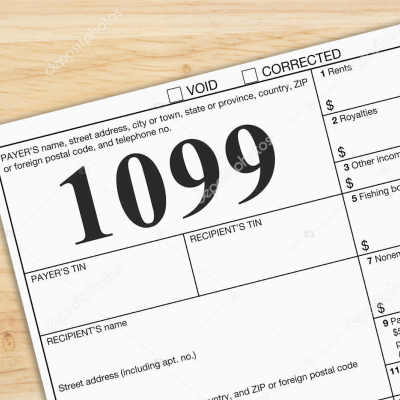
There are several different types of 1099 forms, each used to report different types of income. Here are some of the most common types of 1099 forms:
1099-MISC: This is the most common type of 1099 form, used to report income received by independent contractors, freelancers, and other non-employees who have received $600 or more from a single payer in a calendar year. This form is used to report income from services performed, including fees, commissions, and prizes.
1099-INT: This form is used to report interest income received from banks, credit unions, and other financial institutions. It is issued to individuals who have earned more than $10 in interest income during the calendar year.
1099-DIV: This form is used to report dividend income received from stocks and other investments. It is issued to individuals who have received more than $10 in dividend income during the calendar year.
1099-R: This form is used to report distributions from retirement accounts, such as IRAs, 401(k)s, and pensions. It is issued to individuals who have received distributions of $10 or more during the calendar year.
1099-C: This form is used to report canceled debts, such as credit card debts that have been forgiven by the creditor. It is issued to individuals who have had debts canceled in the amount of $600 or more during the calendar year.
1099-S: This form is used to report the sale of real estate, including land, buildings, and rental properties. It is issued to individuals who have sold real estate for $600 or more during the calendar year.
1099-G: This form is used to report certain government payments, such as unemployment compensation, state tax refunds, and agricultural payments. It is issued to individuals who have received these types of payments during the calendar year.
1099-NEC (Nonemployee Compensation) : is a specific type of 1099 form used to report payments made to independent contractors, freelancers, and other non-employees for services performed. This form is used to report non-employee compensation paid in the course of a trade or business, including fees, commissions, and other types of compensation.
Prior to tax year 2020, businesses used Form 1099-MISC to report non-employee compensation. However, starting with tax year 2020, non-employee compensation is reported on Form 1099-NEC instead.
1099-MISC and 1099-NEC: These forms must be provided to the recipient by January 31st of the year following the tax year in which the payments were made. They must also be filed with the IRS by either February 28th (if filing on paper) or March 31st (if filing electronically). Note that starting in tax year 2021, the deadline for filing 1099-NEC with the IRS was changed to January 31st, which aligns with the deadline for providing the form to the recipient.
1099-INT, 1099-DIV, 1099-R, 1099-S, and 1099-G: These forms must be provided to the recipient by January 31st of the year following the tax year in which the payments were made. They must also be filed with the IRS by either February 28th (if filing on paper) or March 31st (if filing electronically).
It’s important to note that the deadlines listed above are for the 2021 tax year and may be subject to change in future years. Additionally, if the deadline falls on a weekend or holiday, the deadline may be extended to the next business day.
Late filing penalty: If you fail to file your 1099 forms by the deadline, the IRS may assess a penalty based on how late the forms are. The penalty is $50 per form if you file within 30 days of the deadline, $110 per form if you file between 31 days and August 1st, and $270 per form if you file after August 1st or don’t file at all.
Inaccurate filing penalty: If you file incomplete or incorrect 1099 forms, the IRS may assess a penalty of $280 per form if the errors are corrected within 30 days of the deadline, $560 per form if the errors are corrected after 30 days but by August 1st, and $1,130 per form if the errors are not corrected by August 1st or if you don’t file a correction at all.
Intentional disregard penalty: If you intentionally disregard the requirement to file 1099 forms, the penalty is the greater of $570 per form or 100% of the amount of income required to be reported.
It’s important to note that these penalties are subject to change and may vary depending on the circumstances. Additionally, the penalties may be reduced or waived if you have reasonable cause for the late or incorrect filing.
To avoid penalties, it’s important to keep accurate records of your payments and file your 1099 forms on time. You may want to consider using accounting software or a third-party service provider to help with the preparation and filing of your 1099 forms.




